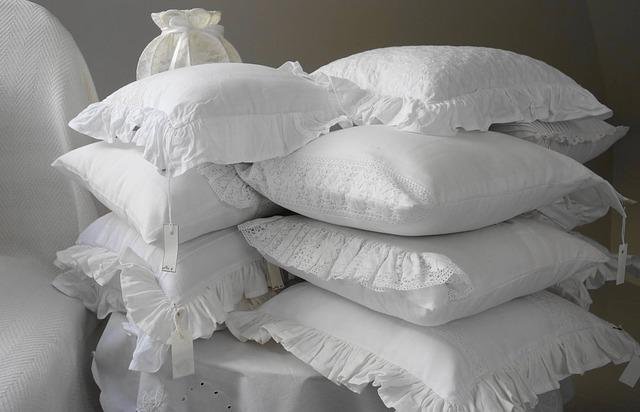
The pillow, a fundamental element for a good rest, together with an adequate mattress and bed base allows us to wake up rested, toned, without neck and back pain. For these reasons, when you decide to change the pillow, it is very important to carefully evaluate the height, shape and material.
As for the mattress, there is no perfect pillow, but the model suitable for each of us; this on the basis of our physical conformation, the positions we assume during sleep and personal tastes.
Here are some examples of the best pillows
Do you sleep sideways? Aim on a pillow that keeps the final part of the spine, i.e. the cervical, in a horizontal position. A pillow that is too high or too low could force the cervical wall to assume incorrect positions.
Do you sleep on your back? The pillow should follow the natural curvatures of the cervical part.
In this case, a pillow that is too high can create muscle tension and an excessive load on the dorsal vertebrae, while a model that is too low can unnaturally accentuate the curvature of the neck, compressing the cervical vertebrae with subsequent stiffening of the muscles.
In this regard, it is important that the pillow fills the area between the shoulders and neck without causing the neck and head to undergo unnatural and abnormal flexions and positions during the night.
What is the best shape of the pillow instead?
The shape and texture are subjective: for this reason on the market, in addition to the classic model available in various heights, there are also anatomical pillows designed to relieve muscle tension in the cervical part, or for people who suffer from pain due to postural problems.
What is the right size for your pillow?
The thickness of the pillow is very important in choosing the pillow and must adapt to the position in which you sleep.
- Low cushion (5 cm). Suitable for children under 6 years of age and also for those who sleep on their stomach. This is because it is not recommended to sleep without any support under the neck and therefore without a pillow! At least 5 cm is needed.
- Medium pillow (12-13cm). Perfect for those who sleep on their backs, i.e. on their backs and also on their sides. It is the most recommended and appreciated size as it is the most flexible, suitable for people of medium build.
- Medium-high pillow (15 cm). Ideal for those who sleep on the side and especially for those with a broad shoulder due to a more massive build.
Pillow material?
The materials used for the manufacture of the cushions are many. The most used are memory, latex, ecological foam and synthetic fibers but they resist modern trade, especially for those still anchored in the past, wool, down and cotton.
-The memory and ecological foam are soft, elastic, antibacterial and easily moldable cellular materials that offer hospitality and support. The more a foam is made up of large and open cells, the more elastic it is. Furthermore, the greater opening favors greater air permeability and consequently greater breathability. Viscoelastic or Memory foams deform under the action of pressure and body heat, molding themselves perfectly to the profile of the cervical area, eliminating pressure points.
-The latex cores are characterized by a structured contact surface with through holes in such a way as to favor the dispersion of the humidity that accumulates inside the cushion. Since latex is an elastic material, it is perfect for those who do not like the enveloping memory but still need hospitality and support for the neck.
-Synthetic polyester fibers are the most used fibers on the market in addition to memory because they have excellent hypoallergenic characteristics, they are washable and some models as well as being soft agisocno very well on the neck.
-The goose down is certainly very light, soft and gives the pillow a fantastic volume. Goose down is usually used together with feathers to improve the bearing capacity of the pillow. Appreciated by those who love to be wrapped in a pillow but not for those with neck pain as it offers little support;
-wool and cotton are the natural materials par excellence. They can be found on the rest market but they are not very recommended because they are not elastic but keep the shape of the weight above the head in the long run.
How to best store your pillow
If you protect it, the pillow lasts longer (from 2 to 5 years). Here are some tips and best practices to follow:
- Air the pillow. Before making the bed, leave the windows open; expose it to outside air but not to the sun once a week.
- Turn it often. This will prevent the pillow from deforming.
- Cover it with anti-mite pillow case, cotton pillow case and colored cotton pillowcase matched with the sheets. The more you protect it the better!
- For those who sweat heavily, protect it with thermo-regulating pillow cases that keep the temperature constant.
Our advice? Before buying a pillow, ask to try it on and then rely on competent consultants.
